Top Ten Worst Animals to Get in Your House
The Top Ten
1 Elephant
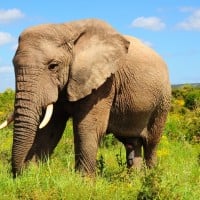 African elephants are elephants of the genus Loxodonta. The genus consists of two extant species: the African bush elephant, L. africana, and the smaller African forest elephant, L. cyclotis.
African elephants are elephants of the genus Loxodonta. The genus consists of two extant species: the African bush elephant, L. africana, and the smaller African forest elephant, L. cyclotis.
 African elephants are elephants of the genus Loxodonta. The genus consists of two extant species: the African bush elephant, L. africana, and the smaller African forest elephant, L. cyclotis.
African elephants are elephants of the genus Loxodonta. The genus consists of two extant species: the African bush elephant, L. africana, and the smaller African forest elephant, L. cyclotis. This thing would destroy my puny house
2 Tiger
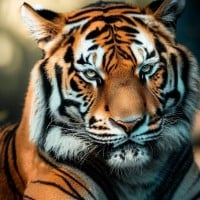 The tiger (Panthera tigris) is the largest living cat species and a member of the genus Panthera. It is most recognisable for its dark vertical stripes on orange fur with a white underside. An apex predator, it primarily preys on ungulates such as deer and wild boar. It is territorial and generally a solitary but social predator, requiring large contiguous areas of habitat, which support its requirements for prey and rearing of its offspring. Tiger cubs stay with their mother for about two years, then become independent and leave their mother's home range to establish their own. ...read more.
The tiger (Panthera tigris) is the largest living cat species and a member of the genus Panthera. It is most recognisable for its dark vertical stripes on orange fur with a white underside. An apex predator, it primarily preys on ungulates such as deer and wild boar. It is territorial and generally a solitary but social predator, requiring large contiguous areas of habitat, which support its requirements for prey and rearing of its offspring. Tiger cubs stay with their mother for about two years, then become independent and leave their mother's home range to establish their own. ...read more.
 The tiger (Panthera tigris) is the largest living cat species and a member of the genus Panthera. It is most recognisable for its dark vertical stripes on orange fur with a white underside. An apex predator, it primarily preys on ungulates such as deer and wild boar. It is territorial and generally a solitary but social predator, requiring large contiguous areas of habitat, which support its requirements for prey and rearing of its offspring. Tiger cubs stay with their mother for about two years, then become independent and leave their mother's home range to establish their own. ...read more.
The tiger (Panthera tigris) is the largest living cat species and a member of the genus Panthera. It is most recognisable for its dark vertical stripes on orange fur with a white underside. An apex predator, it primarily preys on ungulates such as deer and wild boar. It is territorial and generally a solitary but social predator, requiring large contiguous areas of habitat, which support its requirements for prey and rearing of its offspring. Tiger cubs stay with their mother for about two years, then become independent and leave their mother's home range to establish their own. ...read more.
3 Wasp


4 Cockroach
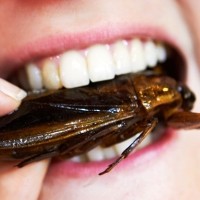 Cockroaches (or roaches) are a paraphyletic group of insects belonging to Blattodea, containing all members of the group except termites. About 30 cockroach species out of 4,600 are associated with human habitats. Some species are well-known as pests. ...read more.
Cockroaches (or roaches) are a paraphyletic group of insects belonging to Blattodea, containing all members of the group except termites. About 30 cockroach species out of 4,600 are associated with human habitats. Some species are well-known as pests. ...read more.
 Cockroaches (or roaches) are a paraphyletic group of insects belonging to Blattodea, containing all members of the group except termites. About 30 cockroach species out of 4,600 are associated with human habitats. Some species are well-known as pests. ...read more.
Cockroaches (or roaches) are a paraphyletic group of insects belonging to Blattodea, containing all members of the group except termites. About 30 cockroach species out of 4,600 are associated with human habitats. Some species are well-known as pests. ...read more. I currently have these in my house
5 Whale


No offense but that's not possible because whale's are in the water
6 Rat
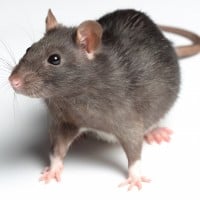 Rats are various medium-sized, long-tailed rodents of the superfamily Muroidea. "True rats" are members of the genus Rattus, the most important of which to humans are the black rat, Rattus rattus, and the brown rat, Rattus norvegicus.
Rats are various medium-sized, long-tailed rodents of the superfamily Muroidea. "True rats" are members of the genus Rattus, the most important of which to humans are the black rat, Rattus rattus, and the brown rat, Rattus norvegicus.
 Rats are various medium-sized, long-tailed rodents of the superfamily Muroidea. "True rats" are members of the genus Rattus, the most important of which to humans are the black rat, Rattus rattus, and the brown rat, Rattus norvegicus.
Rats are various medium-sized, long-tailed rodents of the superfamily Muroidea. "True rats" are members of the genus Rattus, the most important of which to humans are the black rat, Rattus rattus, and the brown rat, Rattus norvegicus.
7 Rhinoceros
 A rhinoceros, commonly abbreviated to rhino, is a member of any of the five extant species (or numerous extinct species) of odd-toed ungulates in the family Rhinocerotidae. (It can also refer to a member of any of the extinct species of the superfamily Rhinocerotoidea.) Two of the extant species are ...read more.
A rhinoceros, commonly abbreviated to rhino, is a member of any of the five extant species (or numerous extinct species) of odd-toed ungulates in the family Rhinocerotidae. (It can also refer to a member of any of the extinct species of the superfamily Rhinocerotoidea.) Two of the extant species are ...read more.
 A rhinoceros, commonly abbreviated to rhino, is a member of any of the five extant species (or numerous extinct species) of odd-toed ungulates in the family Rhinocerotidae. (It can also refer to a member of any of the extinct species of the superfamily Rhinocerotoidea.) Two of the extant species are ...read more.
A rhinoceros, commonly abbreviated to rhino, is a member of any of the five extant species (or numerous extinct species) of odd-toed ungulates in the family Rhinocerotidae. (It can also refer to a member of any of the extinct species of the superfamily Rhinocerotoidea.) Two of the extant species are ...read more.
8 Gorilla
 Gorillas are herbivorous, predominantly ground-dwelling great apes that inhabit the tropical forests of equatorial Africa. The genus Gorilla is divided into two species: the eastern gorilla and the western gorilla, and either four or five subspecies. The DNA of gorillas is highly similar to that of ...read more.
Gorillas are herbivorous, predominantly ground-dwelling great apes that inhabit the tropical forests of equatorial Africa. The genus Gorilla is divided into two species: the eastern gorilla and the western gorilla, and either four or five subspecies. The DNA of gorillas is highly similar to that of ...read more.
 Gorillas are herbivorous, predominantly ground-dwelling great apes that inhabit the tropical forests of equatorial Africa. The genus Gorilla is divided into two species: the eastern gorilla and the western gorilla, and either four or five subspecies. The DNA of gorillas is highly similar to that of ...read more.
Gorillas are herbivorous, predominantly ground-dwelling great apes that inhabit the tropical forests of equatorial Africa. The genus Gorilla is divided into two species: the eastern gorilla and the western gorilla, and either four or five subspecies. The DNA of gorillas is highly similar to that of ...read more.
9 Fly
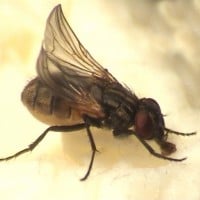

What did this innocent child ever do to you?
10 Grizzly Bear
 The grizzly bear less commonly called the silvertip bear, is any North American morphological form or subspecies of brown bear.
The grizzly bear less commonly called the silvertip bear, is any North American morphological form or subspecies of brown bear.
 The grizzly bear less commonly called the silvertip bear, is any North American morphological form or subspecies of brown bear.
The grizzly bear less commonly called the silvertip bear, is any North American morphological form or subspecies of brown bear.The Contenders
11 Mouse
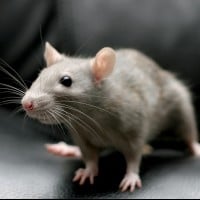 A mouse is a small rodent characteristically having a pointed snout, small rounded ears, a body-length scaly tail and a high breeding rate. The best known mouse species is the common house mouse. It is also a popular pet.
A mouse is a small rodent characteristically having a pointed snout, small rounded ears, a body-length scaly tail and a high breeding rate. The best known mouse species is the common house mouse. It is also a popular pet.
 A mouse is a small rodent characteristically having a pointed snout, small rounded ears, a body-length scaly tail and a high breeding rate. The best known mouse species is the common house mouse. It is also a popular pet.
A mouse is a small rodent characteristically having a pointed snout, small rounded ears, a body-length scaly tail and a high breeding rate. The best known mouse species is the common house mouse. It is also a popular pet.
12 Mosquito
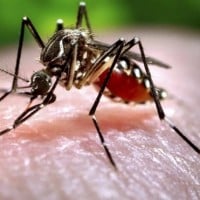 Spanish for "small fly," mosquitoes are insects that have been known to cause various diseases. A sample of diseases caused by mosquitoes: malaria, yellow fever, Chikungunya, West Nile virus, dengue fever, filariasis, Zika virus.
Spanish for "small fly," mosquitoes are insects that have been known to cause various diseases. A sample of diseases caused by mosquitoes: malaria, yellow fever, Chikungunya, West Nile virus, dengue fever, filariasis, Zika virus.
 Spanish for "small fly," mosquitoes are insects that have been known to cause various diseases. A sample of diseases caused by mosquitoes: malaria, yellow fever, Chikungunya, West Nile virus, dengue fever, filariasis, Zika virus.
Spanish for "small fly," mosquitoes are insects that have been known to cause various diseases. A sample of diseases caused by mosquitoes: malaria, yellow fever, Chikungunya, West Nile virus, dengue fever, filariasis, Zika virus.
13 Dog
 The dog or domestic dog (Canis familiaris or Canis lupus familiaris) is a domesticated descendant of the wolf, and is characterized by an upturning tail. The dog is derived from an ancient, extinct wolf, and the modern wolf is the dog's nearest living relative. The dog was the first species to be domesticated, by hunter–gatherers over 15,000 years ago, before the development of agriculture. Due to their long association with humans, dogs have expanded to a large number of domestic individuals and gained the ability to thrive on a starch-rich diet that would be inadequate for other canids. ...read more.
The dog or domestic dog (Canis familiaris or Canis lupus familiaris) is a domesticated descendant of the wolf, and is characterized by an upturning tail. The dog is derived from an ancient, extinct wolf, and the modern wolf is the dog's nearest living relative. The dog was the first species to be domesticated, by hunter–gatherers over 15,000 years ago, before the development of agriculture. Due to their long association with humans, dogs have expanded to a large number of domestic individuals and gained the ability to thrive on a starch-rich diet that would be inadequate for other canids. ...read more.
 The dog or domestic dog (Canis familiaris or Canis lupus familiaris) is a domesticated descendant of the wolf, and is characterized by an upturning tail. The dog is derived from an ancient, extinct wolf, and the modern wolf is the dog's nearest living relative. The dog was the first species to be domesticated, by hunter–gatherers over 15,000 years ago, before the development of agriculture. Due to their long association with humans, dogs have expanded to a large number of domestic individuals and gained the ability to thrive on a starch-rich diet that would be inadequate for other canids. ...read more.
The dog or domestic dog (Canis familiaris or Canis lupus familiaris) is a domesticated descendant of the wolf, and is characterized by an upturning tail. The dog is derived from an ancient, extinct wolf, and the modern wolf is the dog's nearest living relative. The dog was the first species to be domesticated, by hunter–gatherers over 15,000 years ago, before the development of agriculture. Due to their long association with humans, dogs have expanded to a large number of domestic individuals and gained the ability to thrive on a starch-rich diet that would be inadequate for other canids. ...read more.
14 Hornet
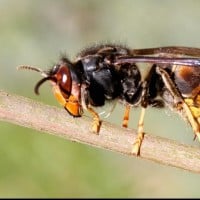 Hornets are the largest of the eusocial wasps, and are similar in appearance to their close relatives yellowjackets. Some species can reach up to 5.5 cm in length.
Hornets are the largest of the eusocial wasps, and are similar in appearance to their close relatives yellowjackets. Some species can reach up to 5.5 cm in length.
 Hornets are the largest of the eusocial wasps, and are similar in appearance to their close relatives yellowjackets. Some species can reach up to 5.5 cm in length.
Hornets are the largest of the eusocial wasps, and are similar in appearance to their close relatives yellowjackets. Some species can reach up to 5.5 cm in length.
15 Leech
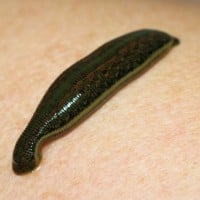 Leeches are segmented worms that belong to the phylum Annelida and comprise the subclass Hirudinea. Like the oligochaetes, such as earthworms, leeches share a clitellum and are hermaphrodites.
Leeches are segmented worms that belong to the phylum Annelida and comprise the subclass Hirudinea. Like the oligochaetes, such as earthworms, leeches share a clitellum and are hermaphrodites.
 Leeches are segmented worms that belong to the phylum Annelida and comprise the subclass Hirudinea. Like the oligochaetes, such as earthworms, leeches share a clitellum and are hermaphrodites.
Leeches are segmented worms that belong to the phylum Annelida and comprise the subclass Hirudinea. Like the oligochaetes, such as earthworms, leeches share a clitellum and are hermaphrodites.
16 Spider
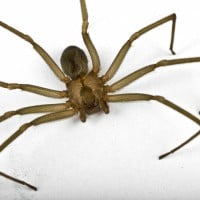 A venomous spider native to the central and southern United States, the Brown Recluse is known for its reclusive habits and preference for dark, undisturbed places. Its venom can cause necrotic skin lesions in humans, making it a species to be cautious of when encountered.
A venomous spider native to the central and southern United States, the Brown Recluse is known for its reclusive habits and preference for dark, undisturbed places. Its venom can cause necrotic skin lesions in humans, making it a species to be cautious of when encountered.
 A venomous spider native to the central and southern United States, the Brown Recluse is known for its reclusive habits and preference for dark, undisturbed places. Its venom can cause necrotic skin lesions in humans, making it a species to be cautious of when encountered.
A venomous spider native to the central and southern United States, the Brown Recluse is known for its reclusive habits and preference for dark, undisturbed places. Its venom can cause necrotic skin lesions in humans, making it a species to be cautious of when encountered.
17 Human
 Humans (Homo sapiens) are the most abundant and widespread species of primate, characterized by bipedalism and large, complex brains. This has enabled the development of advanced tools, culture, and language. Humans are highly social and tend to live in complex social structures composed of many cooperating and competing groups, from families and kinship networks to political states. Social interactions between humans have established a wide variety of values, social norms, and rituals, which bolster human society. Curiosity and the human desire to understand and influence the environment and to explain and manipulate phenomena have motivated humanity's development of science, philosophy, mythology, ...read more.
Humans (Homo sapiens) are the most abundant and widespread species of primate, characterized by bipedalism and large, complex brains. This has enabled the development of advanced tools, culture, and language. Humans are highly social and tend to live in complex social structures composed of many cooperating and competing groups, from families and kinship networks to political states. Social interactions between humans have established a wide variety of values, social norms, and rituals, which bolster human society. Curiosity and the human desire to understand and influence the environment and to explain and manipulate phenomena have motivated humanity's development of science, philosophy, mythology, ...read more.
 Humans (Homo sapiens) are the most abundant and widespread species of primate, characterized by bipedalism and large, complex brains. This has enabled the development of advanced tools, culture, and language. Humans are highly social and tend to live in complex social structures composed of many cooperating and competing groups, from families and kinship networks to political states. Social interactions between humans have established a wide variety of values, social norms, and rituals, which bolster human society. Curiosity and the human desire to understand and influence the environment and to explain and manipulate phenomena have motivated humanity's development of science, philosophy, mythology, ...read more.
Humans (Homo sapiens) are the most abundant and widespread species of primate, characterized by bipedalism and large, complex brains. This has enabled the development of advanced tools, culture, and language. Humans are highly social and tend to live in complex social structures composed of many cooperating and competing groups, from families and kinship networks to political states. Social interactions between humans have established a wide variety of values, social norms, and rituals, which bolster human society. Curiosity and the human desire to understand and influence the environment and to explain and manipulate phenomena have motivated humanity's development of science, philosophy, mythology, ...read more.
18 King Cobra
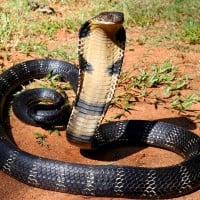 The king cobra is an elapid found predominantly in forests from India through Southeast Asia. ...read more.
The king cobra is an elapid found predominantly in forests from India through Southeast Asia. ...read more.
 The king cobra is an elapid found predominantly in forests from India through Southeast Asia. ...read more.
The king cobra is an elapid found predominantly in forests from India through Southeast Asia. ...read more.
19 Moth
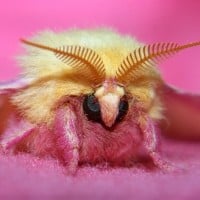 Moths comprise a group of insects related to butterflies, belonging to the order Lepidoptera. Most lepidopterans are moths; and there are thought to be approximately 160,000 species of moth, many of which are yet to be described.
Moths comprise a group of insects related to butterflies, belonging to the order Lepidoptera. Most lepidopterans are moths; and there are thought to be approximately 160,000 species of moth, many of which are yet to be described.
 Moths comprise a group of insects related to butterflies, belonging to the order Lepidoptera. Most lepidopterans are moths; and there are thought to be approximately 160,000 species of moth, many of which are yet to be described.
Moths comprise a group of insects related to butterflies, belonging to the order Lepidoptera. Most lepidopterans are moths; and there are thought to be approximately 160,000 species of moth, many of which are yet to be described.
20 Centipede
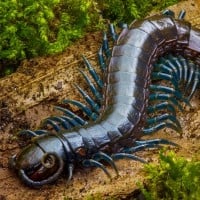 Centipedes are arthropods belonging to the class Chilopoda of the subphylum Myriapoda. They are mainly carnivorous and they prey upon insects, spiders, small birds and rodents, and even other centipedes.
Centipedes are arthropods belonging to the class Chilopoda of the subphylum Myriapoda. They are mainly carnivorous and they prey upon insects, spiders, small birds and rodents, and even other centipedes.
 Centipedes are arthropods belonging to the class Chilopoda of the subphylum Myriapoda. They are mainly carnivorous and they prey upon insects, spiders, small birds and rodents, and even other centipedes.
Centipedes are arthropods belonging to the class Chilopoda of the subphylum Myriapoda. They are mainly carnivorous and they prey upon insects, spiders, small birds and rodents, and even other centipedes.
21 Brown Recluse
 A venomous spider native to the central and southern United States, the Brown Recluse is known for its reclusive habits and preference for dark, undisturbed places. Its venom can cause necrotic skin lesions in humans, making it a species to be cautious of when encountered.
A venomous spider native to the central and southern United States, the Brown Recluse is known for its reclusive habits and preference for dark, undisturbed places. Its venom can cause necrotic skin lesions in humans, making it a species to be cautious of when encountered.
 A venomous spider native to the central and southern United States, the Brown Recluse is known for its reclusive habits and preference for dark, undisturbed places. Its venom can cause necrotic skin lesions in humans, making it a species to be cautious of when encountered.
A venomous spider native to the central and southern United States, the Brown Recluse is known for its reclusive habits and preference for dark, undisturbed places. Its venom can cause necrotic skin lesions in humans, making it a species to be cautious of when encountered.
22 Giant Squid
 The giant squid is a deep-ocean dwelling squid in the family Architeuthidae. Giant squid can grow to a tremendous size due to deep-sea gigantism: recent estimates put the maximum size at 13 m for females and 10 m for males from the posterior fins to the tip of the two long tentacles (second only to ...read more.
The giant squid is a deep-ocean dwelling squid in the family Architeuthidae. Giant squid can grow to a tremendous size due to deep-sea gigantism: recent estimates put the maximum size at 13 m for females and 10 m for males from the posterior fins to the tip of the two long tentacles (second only to ...read more.
 The giant squid is a deep-ocean dwelling squid in the family Architeuthidae. Giant squid can grow to a tremendous size due to deep-sea gigantism: recent estimates put the maximum size at 13 m for females and 10 m for males from the posterior fins to the tip of the two long tentacles (second only to ...read more.
The giant squid is a deep-ocean dwelling squid in the family Architeuthidae. Giant squid can grow to a tremendous size due to deep-sea gigantism: recent estimates put the maximum size at 13 m for females and 10 m for males from the posterior fins to the tip of the two long tentacles (second only to ...read more.
23 Ant
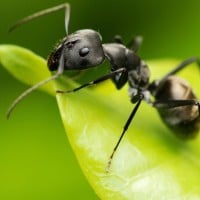 Ants are eusocial insects of the family Formicidae and, along with the related wasps and bees, belong to the order Hymenoptera.
Ants are eusocial insects of the family Formicidae and, along with the related wasps and bees, belong to the order Hymenoptera.
 Ants are eusocial insects of the family Formicidae and, along with the related wasps and bees, belong to the order Hymenoptera.
Ants are eusocial insects of the family Formicidae and, along with the related wasps and bees, belong to the order Hymenoptera.
24 Cat
 The cat (Felis catus) is a domestic species of small carnivorous mammal. ...read more.
The cat (Felis catus) is a domestic species of small carnivorous mammal. ...read more.
 The cat (Felis catus) is a domestic species of small carnivorous mammal. ...read more.
The cat (Felis catus) is a domestic species of small carnivorous mammal. ...read more.
25 Tarantula
 Tarantulas comprise a group of large and often hairy arachnids belonging to the Theraphosidae family of spiders, of which approximately 900 species have been identified.
Tarantulas comprise a group of large and often hairy arachnids belonging to the Theraphosidae family of spiders, of which approximately 900 species have been identified.
 Tarantulas comprise a group of large and often hairy arachnids belonging to the Theraphosidae family of spiders, of which approximately 900 species have been identified.
Tarantulas comprise a group of large and often hairy arachnids belonging to the Theraphosidae family of spiders, of which approximately 900 species have been identified.BAdd New Item